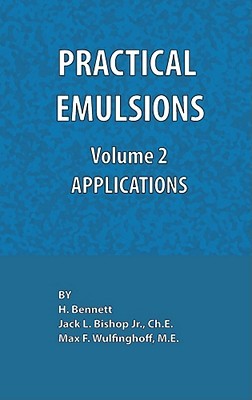
- We will send in 10–14 business days.
- Author: Jack L Bishop
- Publisher: Chemical Publishing Company
- ISBN-10: 0820601063
- ISBN-13: 9780820601069
- Format: 15.2 x 22.9 x 1.6 cm, kieti viršeliai
- Language: English
- SAVE -10% with code: EXTRA
Reviews
Description
CONTENTS - 1. AGRICULTURAL EMULSIONS - 2. BITUMINOUS EMULSIONS - 3. CLEANERS - 4. COSMETICS - 5. EMULSION POLYMERIZATION - 6. FOAMS AND ANTIFOAMS - 7. GASOLINE EMULSIONS - 8. FOOD EMULSIONS - 9. LEATHER AND PAPER TREATMENT EMULSIONS - 10. MEDICAL EMULSIONS - 11. CUTTING OILS, SOLUBLE OILS, MISCIBLE OILS - 12. PAINT - 13. POLISHES - 14. RESIN AND RUBBER EMULSIONS - 15. TEXTILE EMULSIONS - APPENDIX - Conversion Tables - Viscosity Comparison Chart - Color Standards Comparator - Temperature Conversion Table - Rate of Flow Chart - List of Emulsifying Agents - Suppliers of Emulsifying Agents - INDEX - FOREWARD - The first volume of Practical Emulsions has attempted to convey a general impression of the science of the formulation and manufacture of emulsions. Salient points have been presented in as simple a manner as possible, while detailed examination of specific points of the theory has been left to those whose qualifications and interests better fit them for such tasks. In this volume, I have compiled basic formulations of many types of emulsion. This compilation is intended to provide graphic illustration of the breadth of emulsion technology. The formulations can also provide a starting point for the development of new and improved emulsion products and represent the types of product that can be made and their major constituents. These formulations are provided by manufacturers to illustrate the use of their products. The suitability of any product for marketing, or the determination of the patent position regarding any formulation, is the responsibility of the person who manufactures and/or sells the product. Many firms have generously provided formulation suggestions, and they merit my sincere appreciation for their help. Their contributions are acknowledged by appropriate references at the end of each chapter.
EXTRA 10 % discount with code: EXTRA
The promotion ends in 22d.02:21:41
The discount code is valid when purchasing from 10 €. Discounts do not stack.
- Author: Jack L Bishop
- Publisher: Chemical Publishing Company
- ISBN-10: 0820601063
- ISBN-13: 9780820601069
- Format: 15.2 x 22.9 x 1.6 cm, kieti viršeliai
- Language: English English
CONTENTS - 1. AGRICULTURAL EMULSIONS - 2. BITUMINOUS EMULSIONS - 3. CLEANERS - 4. COSMETICS - 5. EMULSION POLYMERIZATION - 6. FOAMS AND ANTIFOAMS - 7. GASOLINE EMULSIONS - 8. FOOD EMULSIONS - 9. LEATHER AND PAPER TREATMENT EMULSIONS - 10. MEDICAL EMULSIONS - 11. CUTTING OILS, SOLUBLE OILS, MISCIBLE OILS - 12. PAINT - 13. POLISHES - 14. RESIN AND RUBBER EMULSIONS - 15. TEXTILE EMULSIONS - APPENDIX - Conversion Tables - Viscosity Comparison Chart - Color Standards Comparator - Temperature Conversion Table - Rate of Flow Chart - List of Emulsifying Agents - Suppliers of Emulsifying Agents - INDEX - FOREWARD - The first volume of Practical Emulsions has attempted to convey a general impression of the science of the formulation and manufacture of emulsions. Salient points have been presented in as simple a manner as possible, while detailed examination of specific points of the theory has been left to those whose qualifications and interests better fit them for such tasks. In this volume, I have compiled basic formulations of many types of emulsion. This compilation is intended to provide graphic illustration of the breadth of emulsion technology. The formulations can also provide a starting point for the development of new and improved emulsion products and represent the types of product that can be made and their major constituents. These formulations are provided by manufacturers to illustrate the use of their products. The suitability of any product for marketing, or the determination of the patent position regarding any formulation, is the responsibility of the person who manufactures and/or sells the product. Many firms have generously provided formulation suggestions, and they merit my sincere appreciation for their help. Their contributions are acknowledged by appropriate references at the end of each chapter.


Reviews